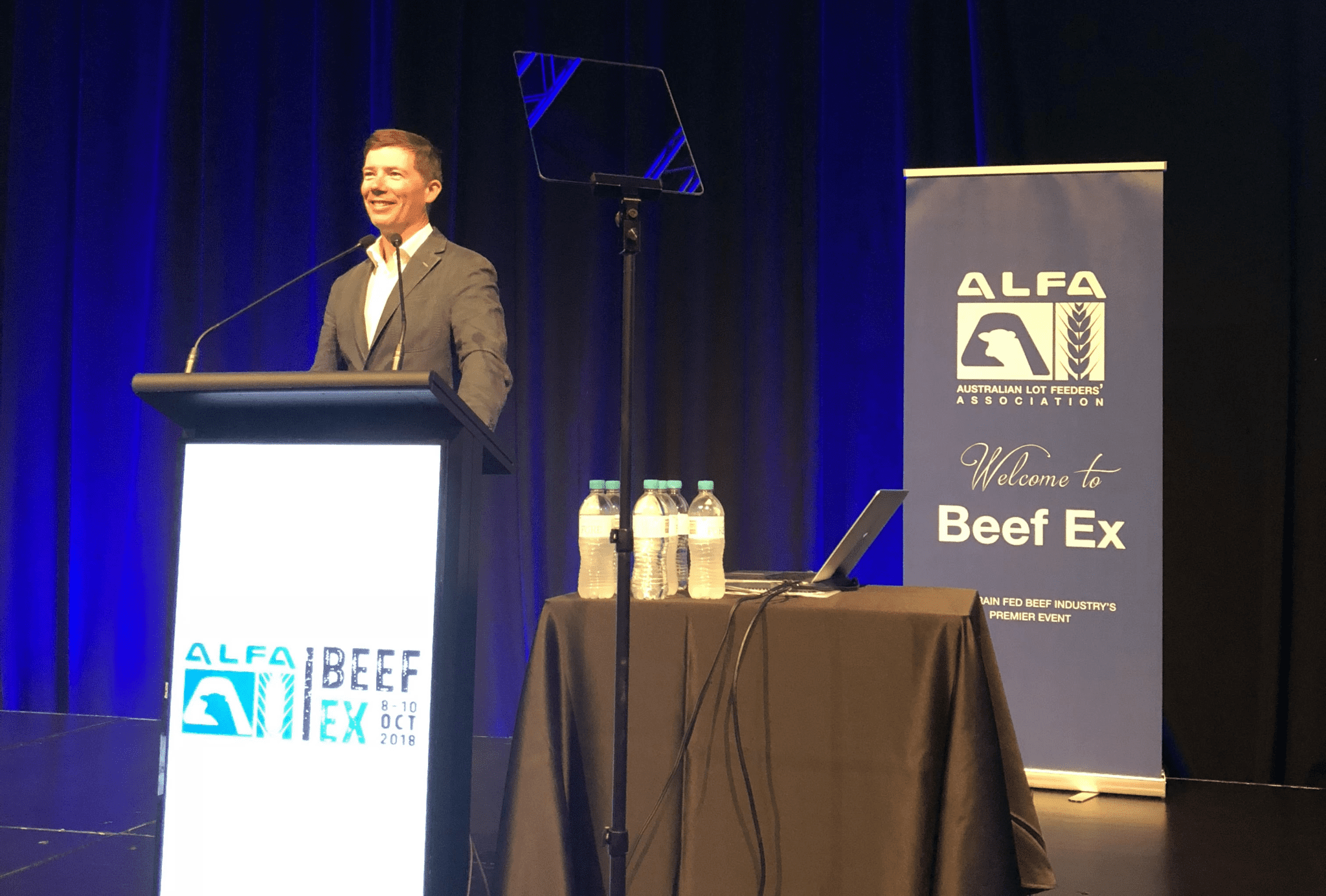
23 Oct LENDING MARKET UPDATE
Ian and Ben Dark had some serious things to discuss at Beef Ex!

Ian Robinson presenting at BeefEx 2018.
To read The Land story “The Hidden Trade Off of Drought Assistance”, published by Shan Goodwin CLICK HERE
Very recently the findings of the Banking Royal Commission have been handed to government. The legislative results of which will still not be known for many months yet. In the meantime, the banks have taken it upon themselves to be proactive in their realignment to their market activity in attempt to minimise potentially harming legislative changes being imposed into the banking operating landscape.
As we (RSP) continually test the banking system on a weekly basis, we witness first hand what adjustments are being made to policy (or interpretation to policy) on a real time intimate basis with respect to commercial lending. The following observations have been made to date over the past 6 weeks;
- Deeper due diligence is being applied to all loans to the point of each file being cross examined (most likely internally driven). This process is creating long lead times with multiple approaches for technical information on a piecemeal basis which has been difficult to predict. Consistency has yet been established by the banks as to how the new world order of credit assessment is to be reached.
- The bank’s tolerance to any exception to policy is marginal at best. For any predictability the approval process needs to fit neatly within with the bank’s guidelines and policy. This is most likely a reaction to the banks revelations of unconscionable lending practices and misconduct in the market. A consequence to prevent future reprisal from any borrower should the loan conditions deteriorate, and evidence can be supported that the bank should not have supported the deal in the first place.
- The banks are seeking deals that have proven capability with ample “head room” within the characteristics of the lending parameters to comfortably accommodate variations that naturally occur in any business cycle.
- The pricing matrix is being squeezed at the back end to accommodate rising costs within the banking system. The marketing propaganda in the public domain sheds light on rising wholesale costs. Anyone with inside knowledge of how this part of the banking system works knows that the numbers do not stack up. It is due to a rise in business costs (royal commission, pending class actions and falling credit etc).
- The amount of credit being lent into the market is falling because of the above. This can be seen with falling prices in house stock in capital cities. Asset prices are not falling in agri land but overall business lending in general will be feeling the full headwinds of this change in credit.
Conclusion: The Opportunity Within

10 years on, this is our GFC.
Timing your presentation to the mainstream bank(s) is important. It is imperative to only introduce your opportunity when all the characteristics of your borrowing profile are aligned to generate a positive response with a high probability of success.
Striking the banks too soon places your file at risk in being rejected which is then noted on the credit watch system for all the banks to see.
In parallel, banks are now concentrating resources in seeking stronger prospective clients to drive their growth. So, there is also an opportunity to renegotiate better terms and pricing if you can present your business within this profile of client.
This tightening cycle will most likely take 2-3 years to wash through. It has only just started with most of the commercial borrowing community yet to realise its full implications. There is a lag time between cause and effect. Mainstream journalism will only pick up on this nuance once most borrowers have had a commercial and material discussion with their bank and the compressing impact on economic indicators have been felt and reported.
Enjoy in the solace that your financial affairs are vaulted within a good corporate governance framework.



Sorry, the comment form is closed at this time.